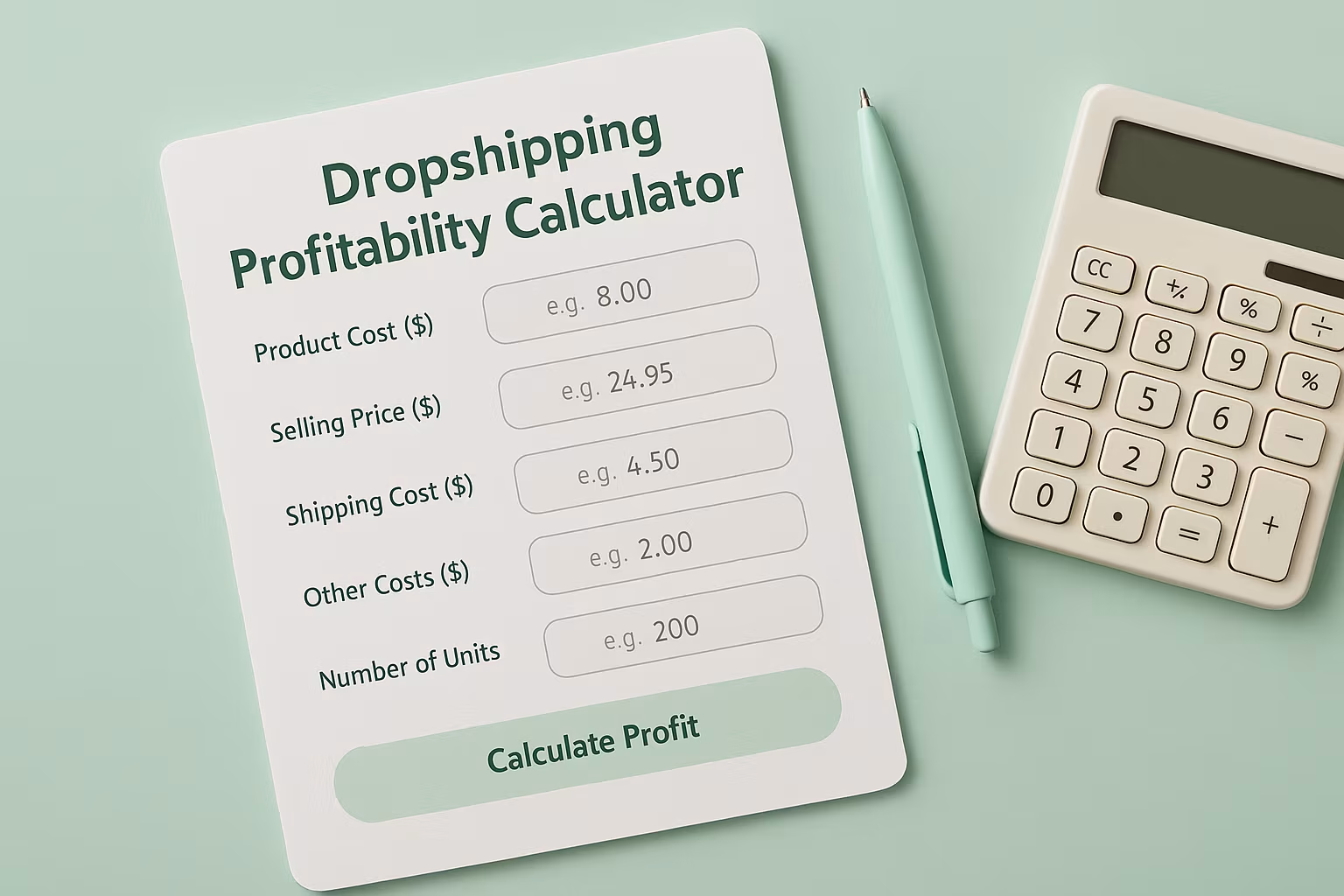
The beauty industry is booming, with global sales expected to exceed $850 billion by 2027. Skincare leads the way, accounting for nearly 40% of the market.
For new entrepreneurs, understanding profit margins is key to long-term success. While markups of 60% to 80% are common, hidden costs can quickly shrink profits.
Whether you're launching skincare, haircare, or makeup, knowing what constitutes a good profit margin for beauty products can set your brand apart.
This guide explores what is a good profit margin for beauty products and how to price smartly in a competitive market.
Everything You Need to Know About Industry Benchmarks: What's Considered "Good"
What constitutes a "good" profit margin varies based on your business stage and goals, but here are some general benchmarks:
For New Beauty Brands
- Minimum viable margin: 30%
- Healthy target margin: 40-50%
- Excellent margin: 60% +
New brands typically need higher margins to compensate for higher customer acquisition costs and to fuel growth.
For Established Beauty Brands
- Sustainable margin: 25-35%
- Healthy margin: 35-50%
- Premium brand margin: 50% +
As brands mature, they can sometimes accept lower margins on individual products as volume increases and operational efficiency improves.
Comparing Online vs. Brick-and-Mortar
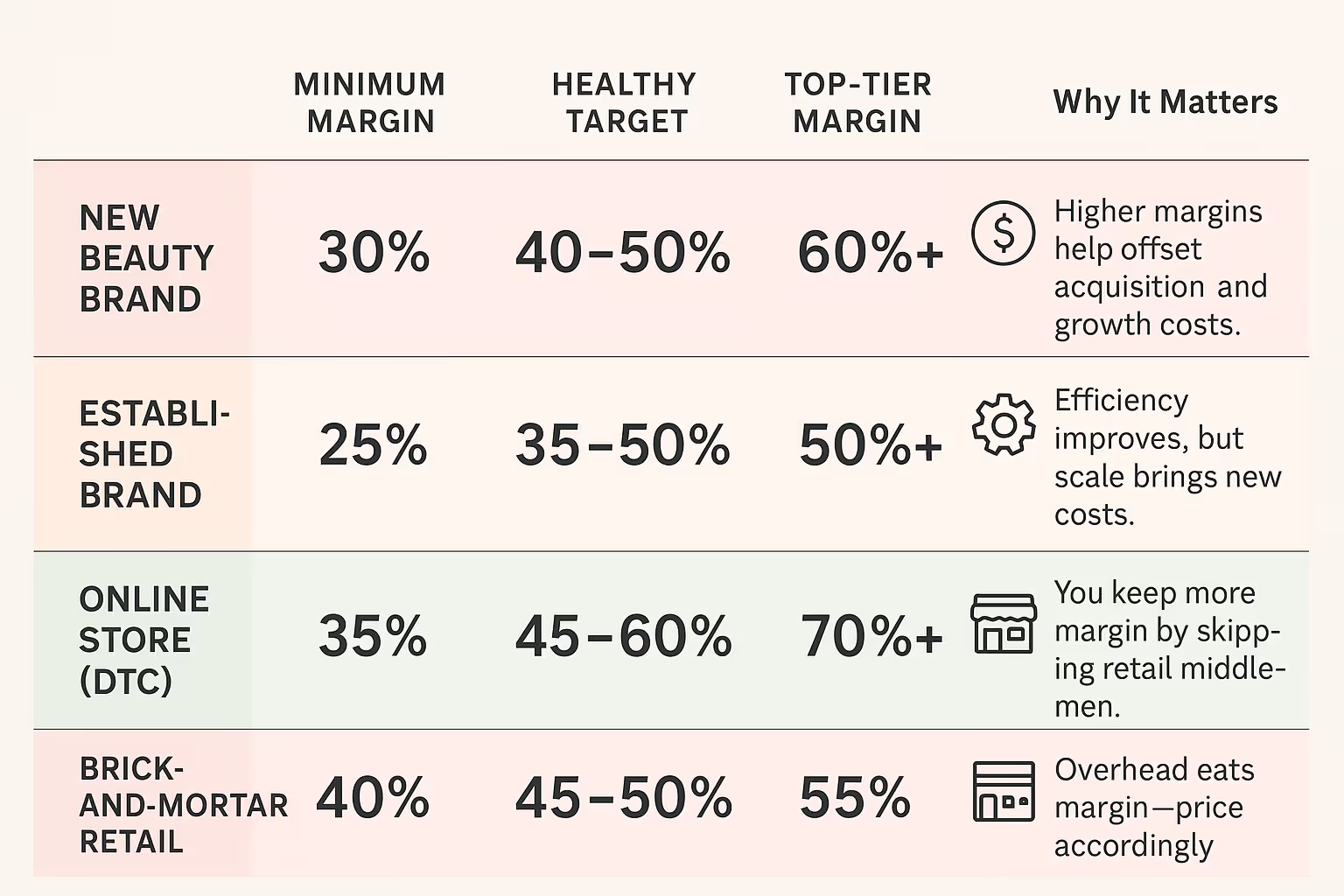
Online beauty retailers typically need 35-45% margins to remain profitable, while brick-and-mortar operations often require 40-50% due to higher overhead costs.
Margins aren’t one-size-fits-all. Whether you're new or scaling, this cheat sheet shows how your beauty product margins compare across stages and sales channels.
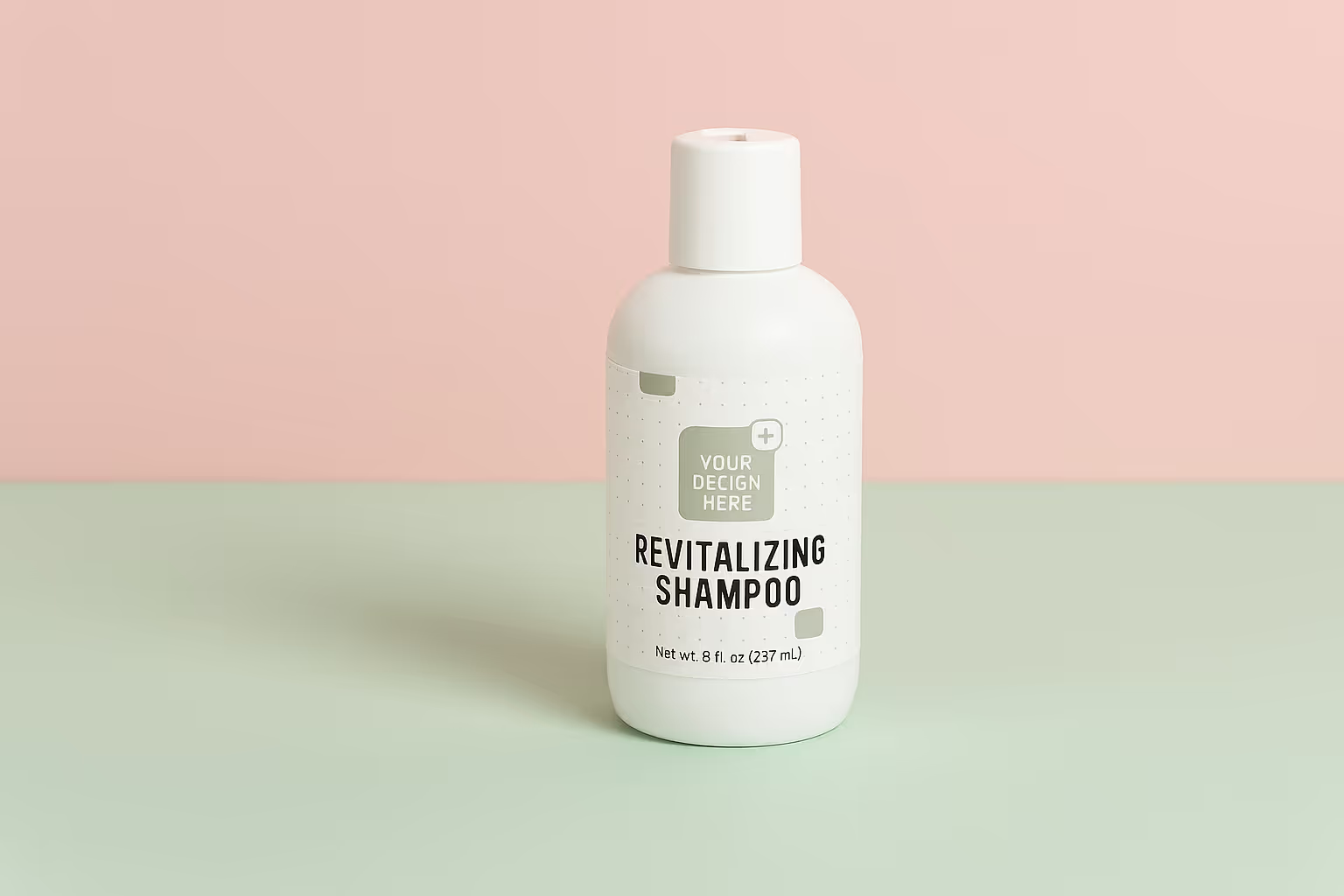
Calculating Your Beauty Product Profit Margin
To determine your profit margin, you need to understand the basic formula:
Profit Margin = (Selling Price - Cost of Goods Sold) ÷ Selling Price × 100%
Cost Components to Consider
When calculating your beauty product costs, include:
- Direct costs:
- Raw ingredients
- Packaging materials
- Labels
- Manufacturing costs
- Indirect costs:
- Shipping and fulfillment
- Storage fees
- Marketing expenses
- Platform fees
- Transaction costs
- Overhead costs:
- Staff salaries
- Office/warehouse rent
- Utilities
- Insurance
Example Calculation
Let's examine a hypothetical skincare product:
- Selling price: $40
- Product cost: $8
- Packaging: $3
- Shipping: $4
- Marketing: $5
- Platform fees: $2
Total COGS: $22
Profit Margin = ($40 - $22) ÷ $40 × 100% = 45%
This 45% margin falls within the healthy range for mid-market skincare products, but there's always room for optimization.
Factors That Influence Beauty Product Margins
Several key factors can significantly impact your beauty product margins:
1. Formulation Complexity
Products with unique or complex formulations often command higher margins. Innovative ingredients, proprietary blends, or patented technologies can justify premium pricing while potentially not adding proportionate costs.
2. Brand Positioning
Luxury and prestige beauty brands routinely achieve margins of 60-80%. Building a strong brand allows you to command higher prices for similar products. Consumers in the beauty space often pay for the experience, reputation, and emotional connection to a brand.
3. Distribution Channels
Your distribution strategy significantly impacts margins:
- Direct-to-consumer (DTC): 40-80% margins
- Wholesale: 20-50% margins
- Marketplaces (Amazon, etc.): 25-45% margins
- Retail partnerships: 15-40% margins
DTC models eliminate middlemen, preserving more margin for your business. Using platforms like Supliful's private label skincare can help maintain higher margins through streamlined fulfillment and production.
4. Volume and Scale
As production volume increases, unit costs typically decrease. Negotiating better rates with suppliers, manufacturers, and shipping partners becomes possible as you scale, improving your margins.
This is why many beauty entrepreneurs start with higher-priced, higher-margin products to build capital before expanding into more price-sensitive categories.
Strategies to Improve Beauty Product Margins
If your current margins fall below industry benchmarks, consider these proven strategies:
1. Optimize Your Pricing Strategy
Many beauty entrepreneurs underprice their products out of fear of pricing themselves out of the market. Implementing strategic pricing for your skincare products can dramatically improve margins without affecting sales volume.
2. Reduce COGS Without Compromising Quality
Look for opportunities to reduce costs:
- Negotiate better rates with suppliers
- Order in larger quantities when possible
- Streamline packaging without affecting perceived value
- Optimize formulations without compromising efficacy
3. Vertical Integration
Consider bringing certain aspects of production in-house as you scale. This might include:
- Packaging assembly
- Certain manufacturing processes
- Fulfillment operations
4. Develop Higher-Margin Product Lines
Expand your catalog with higher-margin items:
- Product bundles: Combining products often increases the overall margin
- Subscription models: Recurring revenue streams with predictable margins
- Premium lines: Limited edition or premium versions of your best sellers
5. Optimize Your Sales Channels
Audit your current sales channels and focus resources on those delivering the best margins. Many beauty brands find that their website delivers significantly better margins than marketplace sales.

Common Pitfalls That Erode Beauty Product Margins
Avoid these common mistakes that can silently erode your profit margins:
1. Excessive Discounting
While promotions can drive volume, frequent or deep discounting trains customers to wait for sales and directly impacts your margins. Instead, create value-added offers that preserve margin while still providing customer incentives.
2. Inefficient Fulfillment
Shipping and fulfillment costs can quickly eat into margins. Consider partnering with a fulfillment specialist who understand the unique requirements of beauty products and can help optimize these costs.
3. Ignoring Customer Lifetime Value
Sometimes, accepting a lower margin on initial purchases makes sense if your customer retention and repeat purchase rates are strong. The most successful beauty brands understand that customer acquisition is expensive, but retention is highly profitable.
4. Overlooking Cross-Selling Opportunities
Many beauty entrepreneurs focus exclusively on individual product margins rather than basket value. Strategically pairing complementary products can increase overall transaction value and improve blended margins.
Exploring High-Margin Beauty Categories
If you're just starting your beauty business or looking to expand your product line, consider these high-margin categories:
Skincare Serums and Treatments
Active serums and specialty treatments typically offer 60-80% margins due to their perceived value and relatively low production costs. Consumers are willing to pay premium prices for products promising specific skin benefits.
Natural and Clean Beauty Products
The natural and clean beauty segment commands 50-70% margins as consumers increasingly prioritize ingredients and sustainability. These products often have simple formulations but command premium pricing due to their positioning.
Hair Treatment Products
Specialized hair care products like masks, oils, and treatments offer margins of 50-65%. The technical nature and specialized ingredients justify higher price points.
Pro Tip: The "One-Step" Opportunity
Products that simplify or combine multiple steps in a beauty routine (like tinted moisturizers with SPF or 2-in-1 cleansers) often command higher margins because consumers value convenience and are willing to pay for products that save them time while delivering multiple benefits.
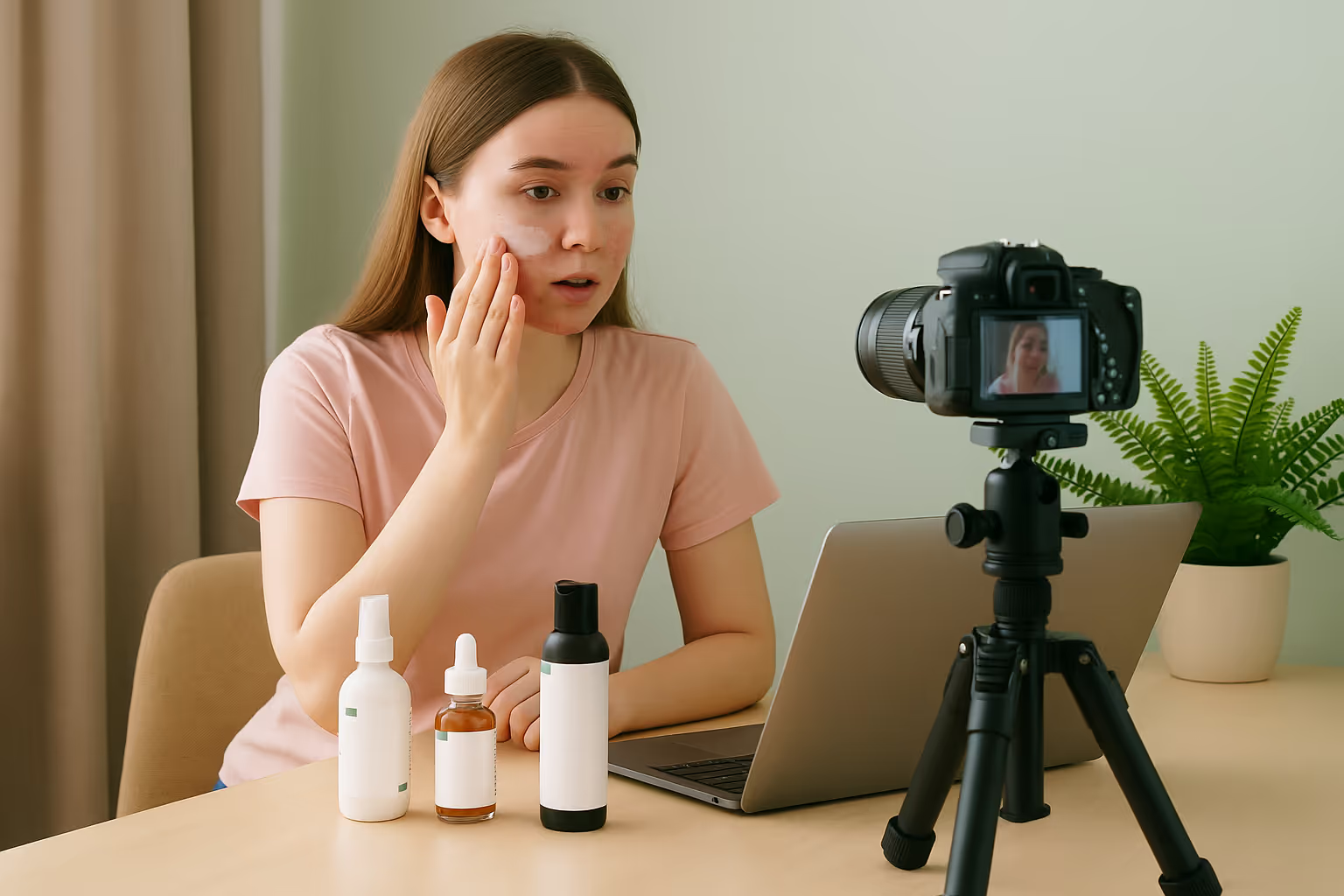
Building a Margin-Focused Beauty Business
To build a truly sustainable beauty business, margins must be a central consideration from day one:
1. Start With Your Target Margin
Rather than starting with a product and trying to make the margins work, begin with your target margin and work backward to determine what products, positioning, and pricing strategy will help you achieve it.
2. Consider a Private Label Approach
For new entrepreneurs, private label offers the perfect balance of customization and margin potential. Working with established manufacturers reduces R&D costs while still allowing for product differentiation.
3. Build Margin Protection Into Your Brand
Develop a brand story and positioning that justifies premium pricing. Emphasize unique ingredients, specific benefits, or distinctive brand values that competitors can't easily replicate or undercut.
4. Continuously Reassess and Optimize
Regularly review your product portfolio's performance and be willing to discontinue low-margin products that drain resources without contributing meaningfully to your bottom line.
Expert’s Strategy: Use Contribution Margin for Smarter Pricing
Many beauty brands rely on gross margin, but seasoned entrepreneurs track contribution margin, the profit left after variable costs like packaging, shipping, and marketing per unit. It reveals which products truly drive profitability.
This deeper metric helps you prioritize high-impact products, allocate ad spend more efficiently, and price bundles with intention.
A product with a lower markup might outperform a bestseller when contribution margin is factored in, giving you a real edge in scaling smart.
Building Real Growth from Your Beauty Product Margins
Understanding what makes a good profit margin for beauty products is just the beginning. Top beauty entrepreneurs treat margins as flexible metrics to optimize constantly.
With industry averages of 40–60%, the beauty space offers strong profit potential. By focusing on premium positioning, direct-to-consumer channels, and smart product development, you can build a business that fuels both growth and sustainability.
The beauty industry rewards those who balance value, quality, and profitability. Now you’re equipped to do just that.
FAQ
Related blogs
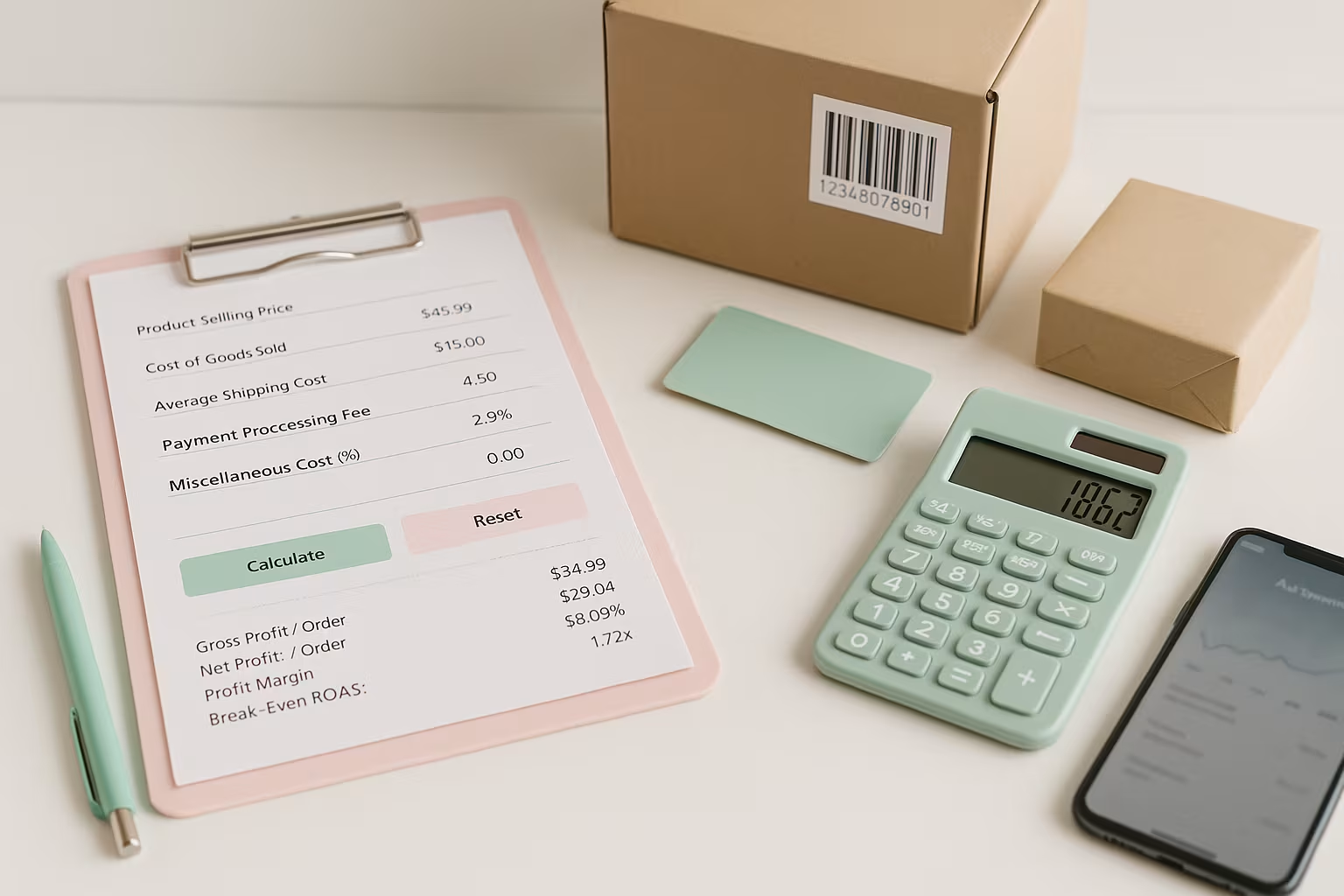
Break-Even ROAS Calculator: Find Out What You Can Afford to Spend on Ads
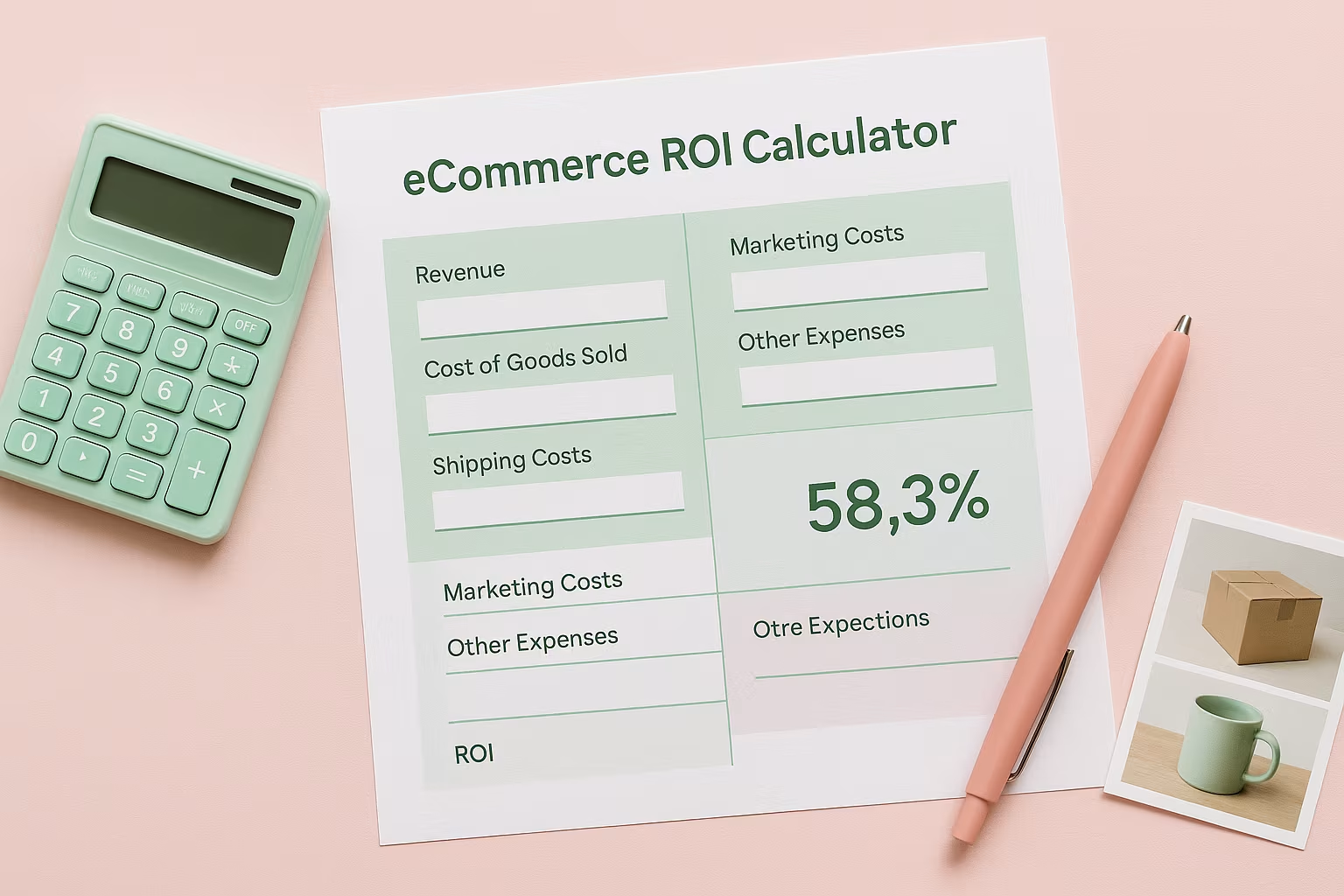
Ecommerce ROI Calculator: Scale Your Store
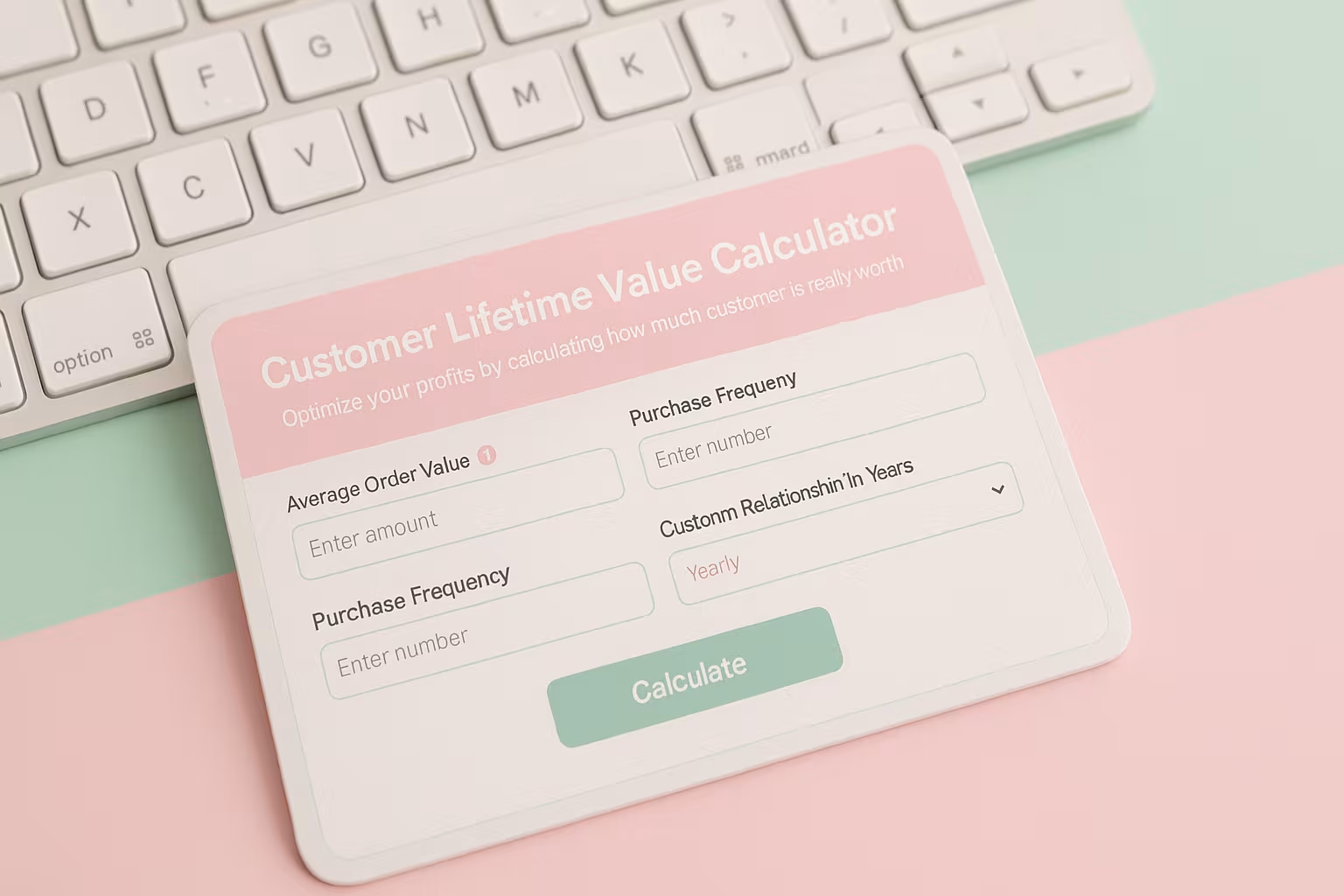
Customer Lifetime Value Calculator: Unlock Your E-commerce Revenue Potential
